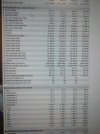I've got a 3600 and I started with the stock Stealth cooler, I found out within minutes of installation that cooler is a worthless pile of junk! Running Folding@home (full load to all cores) it went into the high 80s & was thermal throttling! I knew looking at the cooler it wouldn't be much cop (it's tiny & is all Alu), but it is actually incapable of cooling the CPU properly!

Note this is with stock Bios settings, and the power deviation for that is ~99% (as I posted previously), and no sign of over-volting.
As a temporary fix I lowered CPU PPT from default 'auto' (max 88w) to 65w, this dropped loaded temps to about the mid 70s. It also significantly cut power usage with only a modest lost in all core loaded clock speed of 3-4% (I don't know about single core clock boost).
See here for more numbers on power, temps & clock speed effects vs CPU PPT.
Anyway, I have now finally ditched that POS cooler & have fitted my ancient (but still good) Thermalright Ultima90 on it (using the TR True bolt through kit which is available again atm), that has dropped CPU temp's by about 15+C!

Of course I could've gone for a bigger cooler, but I had the Ultima90 lying around since I retired my Core 2 gear from my 2nd rig, and I wanted to make good use of it, also I figured it would be good enough as I won't be overlocking the 3600, and it is

.




